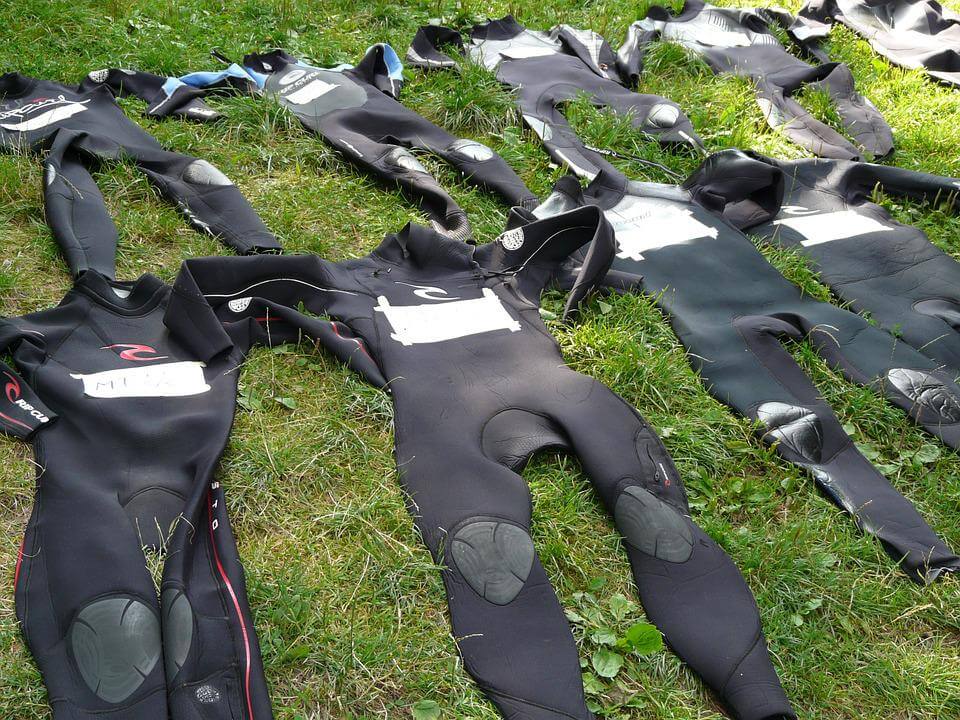
A drysuit is a great investment if you’re a diving beginner or expert. Deciding what drysuit to get is an important decision and there are many options to choose from. Drysuit technology is always changing so it can be a little confusing at first trying to compare the features.
Learning more about drysuit technology, especially about the updates that have been made in drysuits can help you choose the right suit for you.
Among the many choices of features in a drysuit, the type of material might be the most important. Each material, neoprene, bilaminate, and trilaminate have different benefits for different water conditions.
MATERIALS
Neoprene material has a more complex production process than other materials. The material goes through a heating treatment and begins in the form of large blocks of material. Then the material is sliced into different thicknesses such as 3mm, 5mm, and 6.5mm. Then the neoprene material is layered on both sides with some surrounding material.
Bilaminate material has two layers; one is a fabric made out of nylon and the other is a waterproof polyurethane material. The benefits of BARE Sport’s bilaminate material are its chemical resistance to polluted waters and durability.
Trilaminate material has its name because it has three materials included in the fabric. The inner layer is a rubber membrane that’s surrounded by two outer layers. This material can be used in many situations depending on the weight of the material and has different durabilities.
Another benefit of neoprene material is its capability to insulate better than the bilaminate or trilaminate if your suit somehow leaks.
SEALS
The next step after you choose material is choosing your seals. When you are thinking about a seal for your drysuit consider what features you may want while diving.
Silicone seals, neoprene seals, and latex seals are among the many types of seals. Here are some facts on each to help you choose the type right for your dive and comfort.
Silicone seals are customizable and you can shorten the size by cutting them to the length you desire. Silicone is less durable than other materials and can snap in cold environments. However, silicone is great for people who have latex allergies and is a more form-fitting material.
Neoprene seals, compared to other seal types, retain warmth better and are more durable. The downside is that the material is thicker and may cause some skin irritation for some divers with prolonged use if you have sensitive skin.
Latex seals also can be cut to a desirable size. Latex is the standard material used for seals; however some divers may have reactions to the material, so be sure to test out your suit before the dive. Latex is sensitive in the sun and may melt if kept out too long.
One thing to point out is that while latex and silicone are replaceable, neoprene is not; however, neoprene lasts longer and rips less frequently.
Figuring Out Your Best Fit
Neck
Your preference of neck seal can range from form-fitted to a looser fit. Some divers feel constricted if their seal is too tight but others like the material to conform to their skin. You can figure out your preference by trying both out.
Wrist
Choosing your wrist seals is similar to choosing your neck seal. Move around in the seals you try on and see how well you can maneuver in your gear the way you want to. With neoprene material, cuffs need to be inserted into the drysuit; with silicone and latex material, you can wear dry gloves.
Drysuit Fit
No one wants a drysuit that doesn’t fit them. Things to be aware of when trying out your suit for the first time are any uncomfortable sections of the suit; air bubbles, bunching of material, or any other inconvenience you wouldn’t want on a long dive.
If you’re a cold-water diver and wear a lot of bulky underlayers, be sure to try on your potential suit with the insulation layers you’ll be diving with in the field. It’s always better to check ahead of time and avoid unexpected fitting issues.
A good practice for cold-water divers is to try on your drysuit and layers together to make sure there aren’t any surprises such as the drysuit not fitting over the underlayers.
Likewise, it’s important to make sure your neck isn’t constricted and that you can breathe. It’s easy to put up with some discomfort for a few minutes when trying it on, so be honest with yourself, and imagine how it would feel diving over the long term, in a variety of conditions.
Another important fit to check is how constricted your neck is. You don’t want to be constricted while diving to the point where it’s difficult or uncomfortable to breathe. When you try on the suit if there is even a slight amount of discomfort you want to go for a larger neck. Hopefully, with these tips, you feel more confident in selecting and setting up your drysuit for your next dive!






